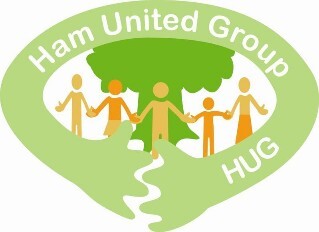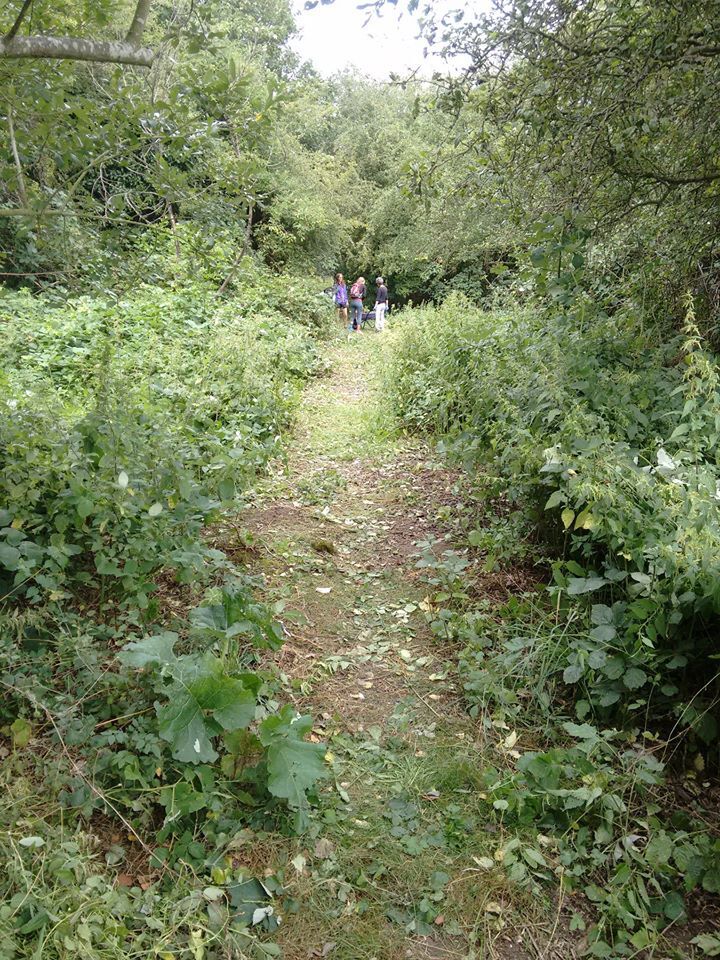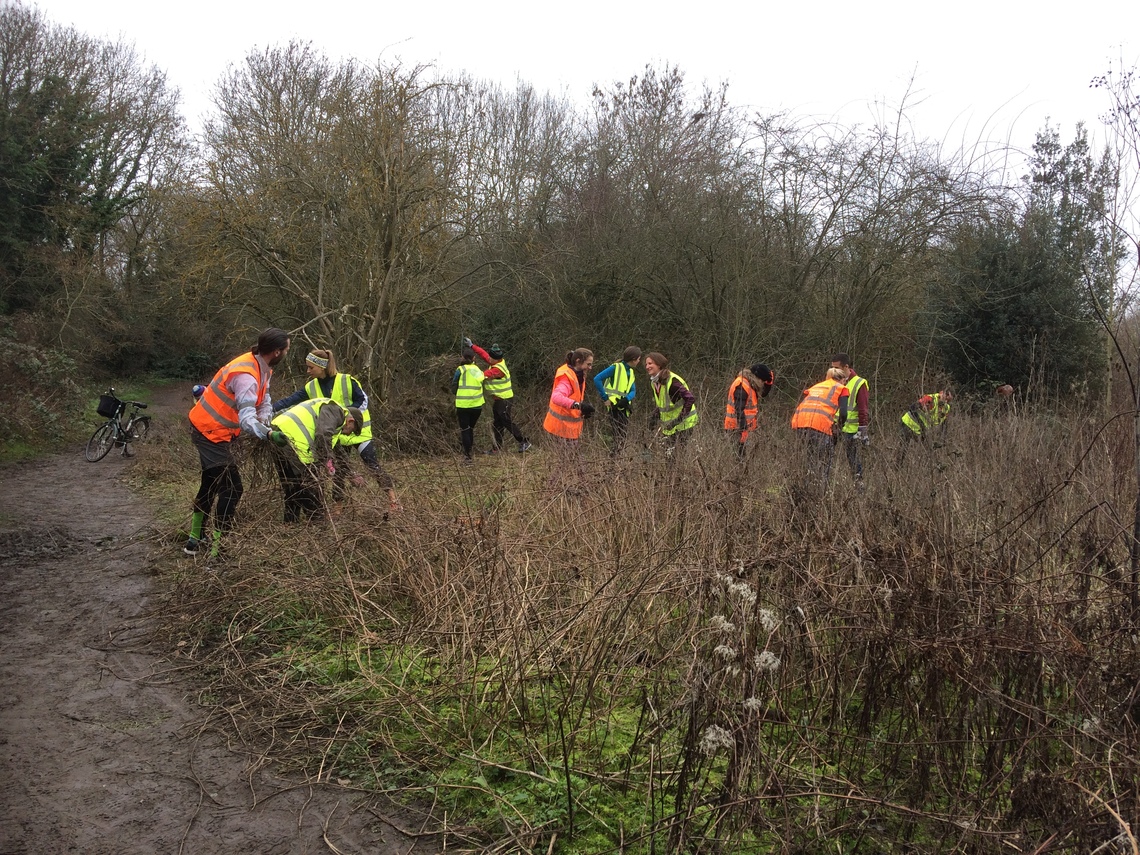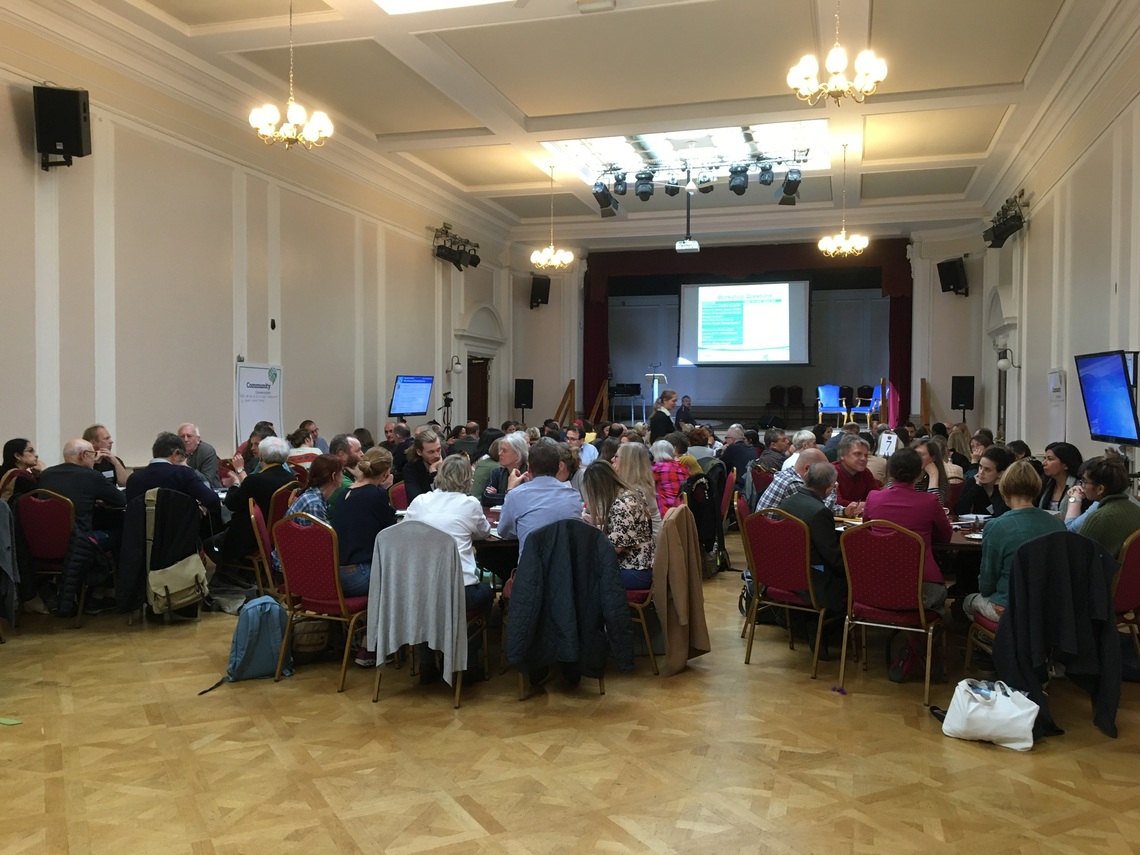Scrub management
Over the past years more and more of our precious grassland on Ham Lands has been taken over by scrub and fast-growing non-native trees. This is having a negative impact on flowering plants and animals, as well as closing off access to some beautiful areas for the local community. Many paths have become overgrown or very muddy.
Friends of Ham Lands have been working very closely with Richmond’s Ecology Officer and local experts to identify the best method of managing the habitats and improving access.
During the spring work have been undertaking to improve the conservation value of Ham Lands South by removing areas of bramble and tall scrub that have gradually invaded the rarer open habitats over the course of many years.
The work, being undertaken by experienced conservation contractors, will selectively reduce the amount of scrub in the areas that will bring the most benefit to the site and its key plants and wildlife, particularly focusing on where it can be restored to meadow. The Friends of Ham Lands and local people with knowledge of important locations for birds, invertebrates and plants have been involved to make sure these areas are not affected or are improved, and the work will be continually monitored and adapted by ecologists.
The main species affected are those that have grown to dominate areas or are not native to the UK including bramble, elder, elm, hawthorn, ash, sycamore and holm oak. Logs will be left for stag beetle loggeries and habitat piles, brash and branches will be chipped and removed from site. Any paint markings seen are not permanent.
The works will take place over approximately three weeks, starting on 7th January. Please do follow any safety signage or the requests of the team members.
If you have any queries or suggestions, please contact the Council’s Ecology Officer on 020 8891 1411 or via parks@richmond.gov.uk, or speak to the team on-site.
For updates on work carried out by the Council, TCV and our Butterfly Group please see the link to News Letters - Thank you.
Why is management necessary?
Natural green spaces are few and far between in the urban areas and with a fast decline of spices both in flora and fauna. Because we have an intricate mixture of habitats on the Ham Lands it supports very rich biodiversity both of plants and animals. Our grasslands, scrubs, woodlands and reedbeds are all valued; each has its own character and role to play, both individually and interactively. However, we should remember that since the 1930s, 97% of our UK meadows have been lost therefore, our grasslands at Ham can be considered of regional (if not national) importance. Although we cannot boast that we have classic pristine meadows ours do come close and they support a surprisingly rich biodiversity. There is a crucial need to keep our grasslands in good order and make people aware of their value. We are lucky to have several wild flowers that are Nationally uncommon and many that are rare in the London area (e.g. Meadow saxifrage, Hoary Cinquefoil, Grass Vetchling, Yellow Vetchling and Bea Orchid.
Why is it not a good idea to allow nature alone to take its course?
Nature is constantly changing; it does not remain the same. If left alone, tall coarser herbs would dominate the grasslands while the delicate, uncommon plants would become scarcer. Then scrub (brambles and saplings) would overrun the grasslands. In turn, the scrub provides the shelter and shade needed for trees to become established and eventually mature. Ultimately woodland will dominate and grasslands and its flowers will be lost. This is known as ‘natural succession’.
How can management help?
Grasslands.
Meadows, an important and much loved feature of the English landscape, remain as open grassland because livestock grazes them, or sometimes hay is cut. At the Ham Lands we cannot rely on grazing so the grasslands must be managed by mowing. If left uncut the taller, tufted grasses and rank plants such as thistles and stinging nettles will crowd out the more delicate, attractive and less common ones. Ideally mowing is planned to take place after the flowers have set seed so that the natural seed bank is never depleted and the invertebrate fauna has had time to feed. This is either in late August to September or early spring before the flower buds develop. Removal of the mowings is very important. If left, the ‘arisings’ enrich the soil, which would favour the rank plants over the delicate ones that thrive in poorer soils and cannot tolerate competition. Frequent, closer mowing is used to maintain amenity grasslands, such as King George’s Fields, but the biodiversity is always greatly reduced.
The planned spring mowing of the some of the coarser grassland areas is now on hold, but we are still expecting an autumn mow.

In the UK 97% of our meadows have already been lost, to read more about if click here.
It may sound obvious but 100 years ago Britain’s countryside was a very different place. Back then it would have been awash with colourful flower-rich meadows and grasslands that were an intrinsic part of our agriculture and people’s daily lives. This may not be the impression one gets while walking around, but those residents with longer memories of the Lands will be aware that the balance has changed a lot in the 50+ years since the Wates Estate was built.
Scrub
Patches of Bramble and Hawthorne scrub encroach the grassland. Scrub develops either as small island clusters centred around a Hawthorne bush or other sapling or as fringes spreading around woodland clumps. Although scrub provides valuable shelter and food for animals and birds the balance between scrub and grassland is crucial and should be maintained. Some clearance is constantly necessary if left alone scrub always outcompetes grassland. However, a few particular scrubby plants need particular consideration. A compact, small-fruited form of bramble, although unattractive and of no use to jam makers, is best left undisturbed as it is favoured by nesting birds, especially blackcaps. Until the 1970s Gorse and Broom were both plentiful at Ham but are sadly now in decline. Removing other scrubs from around our few remaining bushes aims to let in more light and should help them thrive.
Woodlands
We keep some paths open throughout the woodlands, so we people can enjoy walking here
Woodlands with tall trees are important for birds and roosting bats, mosses, lichens and many other things. Apart from the older riverside fringe of trees, our trees are mostly young (in tree terms) but some fine examples are developing. Our woodlands are managed to keep the paths through them open and to develop a few lighter glades and ‘rides’ to enhance biodiversity. These are especially good for butterflies. However, dense scrub has developed around the edges of the wooded clumps and this is seriously encroaching the grassland. Some trees, such as Elm and Cherry, spread by suckering (developing new shoots from the rootstock) and a lot of grasslands is being lost in this way. Many non-natives such as Holm Oak and Sycamore abundantly self-seed in the scrubby surrounds and crowd the more desirable tree specimens. To preserve the best trees the scrub is cleared from around them in a practice known as ‘haloing’. It is better to aim for the wood of good native trees than a crowded jumble of introduced species.
What are our aims?
We need to keep a mosaic of habitats to maintain and enhance our high level of biodiversity. It is the balance between the habitats that is critical. This is important because all fauna and many fungi and lichens ultimately rely on plants. Management should be done in a sensitive way, inevitably some decisions may be hard to make. By liaising with the Council, professional ecologists and local experts we endeavour to identify and support the best ways to manage and monitor our habitats. Care will always be taken to not to disturb rare plants, lichens and fungi, badger sets, fox earths, bird nesting sights and roosts.
No clearance work will be done when birds are likely to be nesting.
Also, we try to make sure sufficient food plants (such as stinging nettles) are available for our invertebrates.
Since we are keen to build up our knowledge of nature on the Ham Lands we welcome any observations and information you can give us.
FoHL will let you know if any significant management projects are planned and be happy to try and answer questions.
Helping the Butterflies
Improving the butterfly habitats
We usually meet every second Saturday of the month and do practical work on Ham Lands. Due to the coronavirus, we are currently not carrying out habitat restoration work with volunteers. Please join our mailing list or check our event calendar if you would like to join us once we resume our activities.

Here we found Sand leek under the stingy nettles. Diana Bridson is a botanist and she is helping us identify plants. She has studied Ham Lands for decades.



Top picture, Hawthorn roots.
Left, we had good help from the Good Gym to pull up stingy nettles roots.
Right, this area was covered with stingy nettles and brambles last summer, it be interesting to see what comes up first, we are of course hoping to see some wildflowers
Climate Emergency
Richmond Borough has joined a growing international movement by declaring a climate emergency. The council has also directed staff to consult with the public on recommended revisions to the borough’s greenhouse gas (GHG) emission reduction targets and other climate action strategies.
We were very pleased to get invited to Climate Change Summit in October 2019. FoHL had a stand along with several other organisations that are actively involved in trying to protect the environment we live in, make it better and engage with the community. We also facilitated discussion groups. There was a great deal of passion, energy and commitment in the room on that day. To read more about it please click here
Sufiyo Andersson and Chris Ruse at our stall
Sharon Mehta was one of the facilitators for the Climate change discussions
140 people took part in a discussion on how we use resources. This included discussion about how our the way we use the land, waterways and surrounding oceans and seas is having a huge impact on the number of living things that can survive together (biodiversity). An increase in carbon dioxide in the air is resulting in increased temperatures and climate change. Hotter temperatures and erratic weather patterns also have an impact on biodiversity.
Nature has a remarkable way of adapting and helping to address problems. But we need rich biodiversity to enable that to happen. Plants and fungi can absorb huge amounts of carbon dioxide. Plants provide homes and food for a huge number of living things, as well as being critical for our survival.
In turn, the animals and fungi support the plants by pollinating, distributing seeds, or by helping to feed or protect them. Left to nature, most plants have fungi associated with their roots that help them collect water and help to feed and protect them.
We will share more information on how we can all make a difference as the reports from the summit are prepared.
In the meantime, FoHL will focus on our work to support the biodiversity on Ham Lands.




